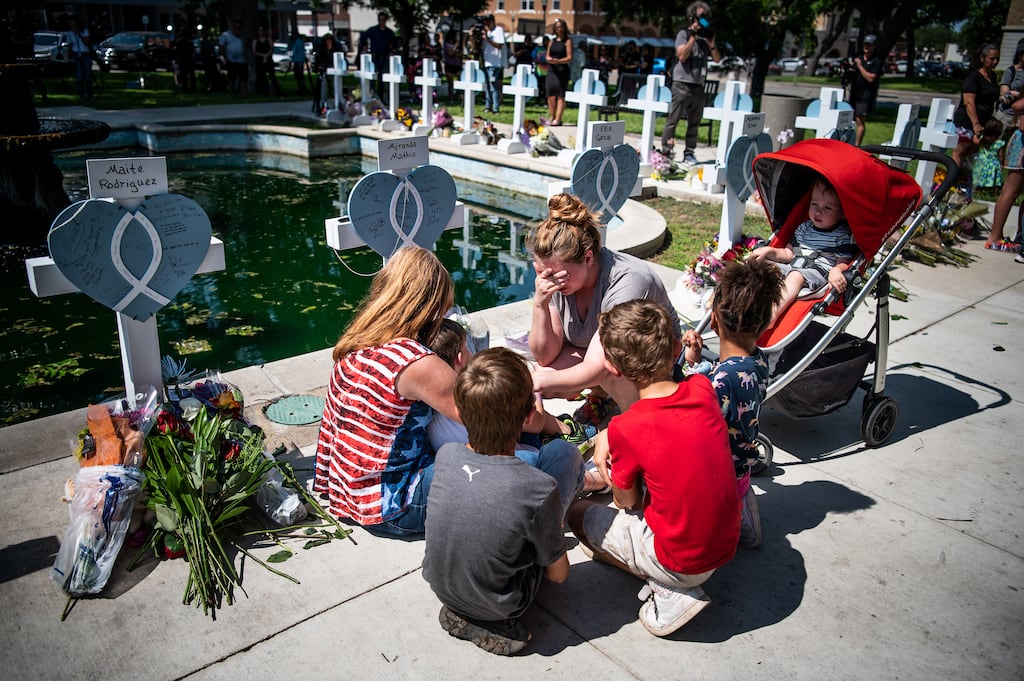Oct. 1st, 2015. A Thursday. A conference room in San Jose. The air conditioning is humming, but it is not enough to lift the torpor of another work meeting that could have been an email.
A notification flashes on my phone. Code red lockdown at my children’s school. It has been in place since 4pm. It is now 5.40pm. I am immediately, horribly awake.
Every morning when I drop them to school, after I’ve checked on lunches, library books and homework, there is a nanosecond when I wonder if this is it, if this is the day death will come rampaging through the door of the school.
In the car, I go into reporter mode, assembling the facts. Most children have gone home. But my children are not at home. They are on campus in an after-school club, and have been locked down there for 100 minutes already. I can hear the sheriff’s helicopter hovering overhead.
READ MORE
[ Texas school shooting: Questions persist in the wake of an unspeakable tragedyOpens in new window ]
Twenty five minutes later, as I pull into the deserted school car park, there is a second notification. The lockdown is over. This is not the day.
The door to the after-school club, usually open for air, is still locked and all the windows are shuttered. The climbing frame is empty. When I knock, there is the sound of something heavy being dragged away from the door. My children wander out with armfuls of artwork, blinking in the sunlight. “Can we get a snack when we get home?” one says.
I resist the urge to grab them and hold them. I don’t want to imprint this day on their memories, their first experience of school as a high-risk activity.
By then, lockdown drills, even in what felt like a safe California town, were already an utterly unremarkable part of their school lives. There was a non-specific emergency drill every week. Once a term, the children would barricade the door with desks and cower in a closet sucking lollipops to help them stay quiet. Some teacher decided that hate-filled humans were too terrifying a prospect for first graders, so my boy believed he was practising hiding from mountain lions. I understood: I could live with the red widow spiders nesting in the cracks between the swimming pool tiles, or the 99 per cent likelihood of a magnitude 6.7 earthquake hitting California. But I couldn’t live with the idea that their classrooms were places of incalculable danger.
His sister, a worldly nine, told him solemnly that the best way to avoid getting shot in the yard was to run in a zigzag line.
After the lockdown came the debriefs and more facts. A child in middle school had left a handwritten threat in the principal’s office. It was deemed serious enough to launch a full code red and have him arrested. There was a meeting, talk about whether the “juvenile suspect” should be expelled, and why it took so long for parents to be informed. There was a petition to force the school to improve its response. Better supplies and emergency radios were promised for the next lockdown. Nobody said anything about gun laws. What struck me afterwards was how unfazed most of the adults were. Only 50 people signed the petition.
[ Trigger-happy nation: Guns deeply embedded in US culture ]
To survive as a parent of American schoolchildren, you have to submit to being a frog in boiling water — I know this, because in the two years we lived there, the low-level terror began to feel almost normal.
Oct. 1st,, 2015 was not the day for us, but tragically, it was the day at a community college in Roseburg, Oregon. A student walked into English class with a Glock 19 and Taurus semi-automatic pistol and shot dead eight students and an assistant professor, injuring eight others, before killing himself. He left a note in which he offered, by way of explanation, that he was a virgin with “no friends, no job, no girlfriend”. It was the deadliest shooting in Oregon history, but you probably don’t remember it. How could you? In the decade since Sandy Hook, there have been 3,500 mass shootings in the US. Since Columbine, 311,000 children have witnessed gun violence at 331 schools, according to the Washington Post. In 2020, firearms surpassed cars as the leading cause of death for US children.
The day came this week to Robb Elementary, in Uvalde, Texas. At least 19 students and two teachers, who packed their schoolbags and ate their toast on Tuesday morning, are now dead.
We are already familiar with the cycle that follows. We will hear about the personality, petty resentments, desire for notoriety and sense of entitlement of the malfunctioning mind of Salvador Ramos. Politicians and public figures will oscillate between fury and platitudes about mental health. Those on the right will ignore the obvious – that this carnage was carried out by an 18-year-old with an AR-15 he walked into a shop and bought. It will continue until there is another one, more children dead, more hollow screams in playgrounds, more beds that will never again be slept in.
All week people have been asking why. Did the police respond too slowly? Should backpacks be banned? Was he bullied? Is there a “problem with mental health” in his community? But the only “why” that actually matters is why United States is still playing roulette with children’s lives in an epidemic deadlier than any pathogen.
This weekend, the National Rifle Association is meeting in Houston, Texas, for its annual convention where visitors can peruse “over 14 acres of the latest guns and gear” and enjoy a “freedom” and irony-filled weekend with special guests including Donald Trump. Because the NRA loves children, under-18s go free.
Thoughts and prayers will be offered for the families who, 442km away, are burying their babies.













